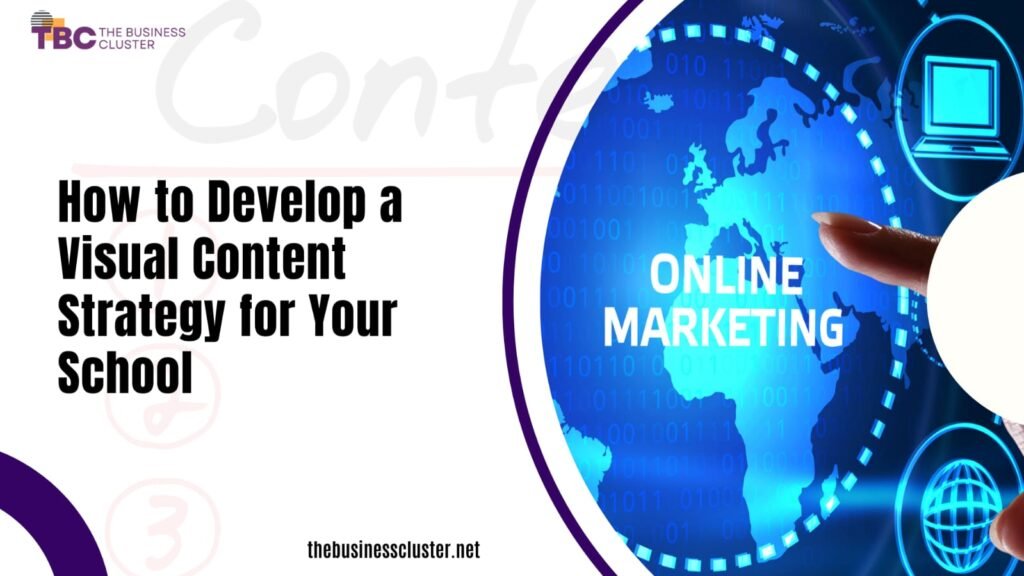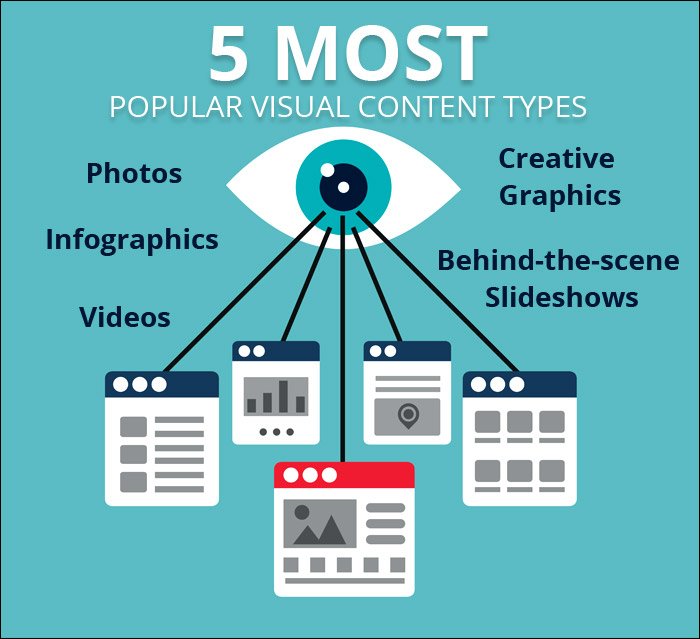

Visual Content Strategy for School
In today’s digital age, schools use visual content a lot to get students, parents, and the community involved. From cool social media posts to awesome website banners, visual content helps get messages across. In this guide, we’ll talk about how to make a strong visual content plan just for your school. We’ll cover everything from understanding visual content to making sure your plan works well. Let’s get started!
Understanding Visual Content
Visual content includes different forms like pictures, videos, infographics, and presentations. Its main goal is to grab people’s attention and share information quickly and effectively. In schools, visual content covers a wide range of things, from photos of events to videos and graphics that explain important ideas. It’s all about making information easy to understand and interesting to look at. For example, instead of just reading about a science experiment, students might watch a video showing how it’s done. Visual content makes learning more enjoyable and helps students remember what they’ve learned. It’s like bringing lessons to life right before their eyes!

Importance of Visual Content in Today’s Digital Landscape
Before visual content became popular, marketing and design focused on static images and simple graphics. They used things like brochures, posters, and billboards to get the message across. These old-fashioned forms of advertising were important for sharing information, but they didn’t engage people as much as they could.
Moreover, Read this blog as well: How to Boost School’s SEO Strategy?
Then, digital graphics came along, allowing for cooler and more complex designs. With digital platforms, visual content changed even more. Now, we have animations, videos, and interactive stuff. This has made people want visual content that’s more exciting and easy to share. In fact, studies show that 91% of people prefer visual content over written stuff.
Sure thing! Visual content is super important in digital marketing. Here’s why:
Effectiveness:
Firstly, it’s really effective. Pictures, videos, and infographics are way more engaging than just plain text. Our brains understand visuals faster, so they grab our attention better.
Efficiency:
Secondly, visuals are efficient. They can explain complicated stuff quickly, which keeps people interested.
Accessibility:
Plus, visual content is accessible to everyone. It doesn’t matter what language you speak, visuals can still convey emotions and tell stories. They’re also great for people who struggle with reading, like those with dyslexia or who aren’t native speakers.
Social media economy:
And let’s not forget social media! Platforms like Instagram, Pinterest, and TikTok are all about visuals. They’ve changed how brands and people share stuff online. These days, they’re the main places where we communicate, market, and share information.
Visibility:
Furthermore, It can help your content show up better in search engines. Search engines like Google like content that people enjoy, and visuals make content more fun and shareable. When more people like and share your content, it can improve your ranking in search results.
Branding:
Standout visuals can help you stand out from the crowd. They can make you, your brand, or your school look unique and memorable online.
Schools are catching on to this and starting to use more visual content in their marketing. But if you’re new to visual content, you might be wondering how to get started. Well, it’s all about setting clear goals and understanding what your audience likes. Then, you can decide what kind of visual content to make. Let’s break down the basics of visual content strategy for you.
Types of Visual Content to Consider
When planning your school’s visual content strategy, it’s crucial to think about different types of visuals you can use:
Photos: Firstly, there are photos. These can capture important moments from school events, classes, and activities, showing off your school’s spirit and community.
Videos: Then, there are videos. You can make educational videos, virtual tours, and interviews with teachers and students to give people a glimpse into school life.
Infographics: Next, there are infographics. These use graphics to explain data and processes, making complex information easier to understand.
Presentations: Lastly, there are presentations. You can create engaging presentations for assemblies, parent meetings, and staff training sessions.

Furthermore, Read this blog as well: Revolutionizing Your Digital Journey: Khabai Tech
Mastering the Art of Visual Content Strategy: Final Tips
To make sure your visual content strategy works well, keep these tips in mind:
- First, know your audience. Understand what they like and what they want to see.
- Plan ahead by making a content calendar. This will help you keep your visual content consistent all year round.
- Be authentic. Show off what makes your school unique and special.
- And finally, keep track of how your visual content is doing. Check things like how many people are engaging with it, how much traffic it’s bringing to your website, and how many followers you’re gaining on social media. This will help you see what’s working and what you might need to change.
Conclusion:
As you’ve gone through this guide, you’ve learned a lot about the importance of visual content and the different ways it can be used. Now that you understand visual content better and know how to use different types, you’re ready to create a strong visual presence for your school. So, embrace the power of visual storytelling! You’ll see how it helps your school connect with your community on a deeper level.
If you need help crafting visual content, check out our Visual Content Strategy Guide. It’s packed with expert tips and examples to guide you every step of the way!
Barkha Sachdeva is a B.Com(Hons) graduate from Delhi University. Passionate about crafting content, she enjoys writing about fashion, beauty, technology, and travel. With three years of content writing experience, she possesses valuable insights and ideas in these domains.







2 comments